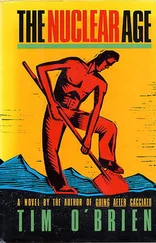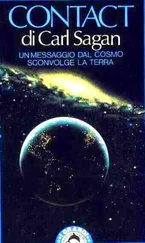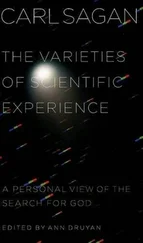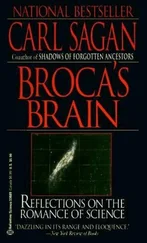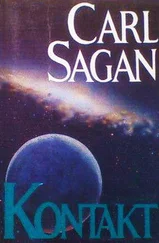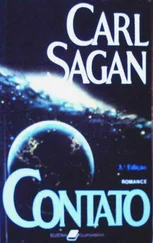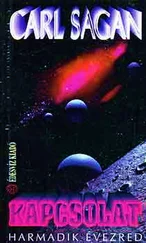Some of what I am about to describe is horrifying. I know, because it horrifies me. There is a tendency—psychiatrists call it “denial”—to put it out of our minds, not to think about it. But if we are to deal intelligently, wisely, with the nuclear arms race, then we must steel ourselves to contemplate the horrors of nuclear war. The results of our calculations astonished us. In the baseline case, the amount of sunlight at the ground was reduced to a few percent of normal—much darker, in daylight, than in a heavy overcast and too dark for plants to make a living from photosynthesis. At least in the Northern Hemisphere, where the great preponderance of strategic targets lies, an unbroken and deadly gloom would persist for weeks.
Even more unexpected were the temperatures calculated. In the baseline case, land temperatures, except for narrow strips of coastline, dropped to minus 25° Celsius (minus 13 degrees Fahrenheit) and stayed below freezing for months—even for a summer war. (Because the atmospheric structure becomes much more stable as the upper atmosphere is heated and the low air is cooled, we may have severely underestimated how long the cold and the dark would last.) The oceans, a significant heat reservoir, would not freeze, however, and a major ice age would probably not be triggered. But because the temperatures would drop so catastrophically, virtually all crops and farm animals, at least in the Northern Hemisphere, would be destroyed, as would most varieties of uncultivated or domesticated food supplies. Most of the human survivors would starve.
In addition, the amount of radioactive fallout is much more than expected. Many previous calculations simply ignored the intermediate time-scale fallout. That is, calculations were made for the prompt fallout—the plumes of radioactive debris blown downwind from each target—and for the long-term fallout, the fine radioactive particles lofted into the stratosphere that would descend about a year later, after most of the radioactivity had decayed. However, the radioactivity carried into the upper atmosphere (but not as high as the stratosphere) seems to have been largely forgotten. We found for the baseline case that roughly 30 percent of the land at northern midlatitudes could receive a radioactive dose greater than 250 rads, and that about 50 percent of northern midlatitudes could receive a dose greater than 100 rads. A 100-rad dose is the equivalent of about 1000 medical X-rays. A 400-rad dose will, more likely than not, kill you.
The cold, the dark and the intense radioactivity, together lasting for months, represent a severe assault on our civilization and our species. Civil and sanitary services would be wiped out. Medical facilities, drugs, the most rudimentary means for relieving the vast human suffering, would be unavailable. Any but the most elaborate shelters would be useless, quite apart from the question of what good it might be to emerge a few months later. Synthetics burned in the destruction of the cities would produce a wide variety of toxic gases, including carbon monoxide, cyanides, dioxins and furans. After the dust and soot settled out, the solar ultraviolet flux would be much larger than its present value. Immunity to disease would decline. Epidemics and pandemics would be rampant, especially after the billion or so unburied bodies began to thaw. Moreover, the combined influence of these severe and simultaneous stresses on life are likely to produce even more adverse consequences—biologists call them synergisms—that we are not yet wise enough to foresee.
So far, we have talked only of the Northern Hemisphere. But it now seems—unlike the case of a single nuclear weapons test—that in a real nuclear war, the heating of the vast quantities of atmospheric dust and soot in northern midlatitudes will transport these fine particles toward and across the Equator. We see just this happening in Martian dust storms. The Southern Hemisphere would experience effects that, while less severe than in the Northern Hemisphere, are nevertheless extremely ominous. The illusion with which some people in the Northern Hemisphere reassure themselves—catching an Air New Zealand flight in a time of serious international crisis, or the like—is now much less tenable, even on the narrow issue of personal survival for those with the price of a ticket.
But what if nuclear wars can be contained, and much less than 5000 megatons is detonated? Perhaps the greatest surprise in our work was that even small nuclear wars can have devastating climatic effects. We considered a war in which a mere 100 megatons were exploded, less than one percent of the world arsenals, and only in low-yield airbursts over cities. This scenario, we found, would ignite thousands of fires, and the smoke from these fires alone would be enough to generate an epoch of cold and dark almost as severe as in the 5000 megaton case. The threshold for what Richard Turco has called The Nuclear Winter is very low.
Could we have overlooked some important effect? The carrying of dust and soot from the Northern to the Southern Hemisphere (as well as more local atmospheric circulation) will certainly thin the clouds out over the Northern Hemisphere. But, in many cases, this thinning would be insufficient to render the climatic consequences tolerable—and every time it got better in the Northern Hemisphere, it would get worse in the Southern.
Our results have been carefully scrutinized by more than 100 scientists in the United States, Europe and the Soviet Union. There are still arguments on points of detail. But the overall conclusion seems to be agreed upon: There are severe and previously unanticipated global consequences of nuclear war—subfreezing temperatures in a twilit radioactive gloom lasting for months or longer.
Scientists initially underestimated the effects of fallout, were amazed that nuclear explosions in space disabled distant satellites, had no idea that the fireballs from high-yield thermonuclear explosions could deplete the ozone layer and missed altogether the possible climatic effects of nuclear dust and smoke. What else have we overlooked?
Nuclear war is a problem that can be treated only theoretically. It is not amenable to experimentation. Conceivably, we have left something important out of our analysis, and the effects are more modest than we calculate. On the other hand, it is also possible—and, from previous experience, even likely—that there are further adverse effects that no one has yet been wise enough to recognize. With billions of lives at stake, where does conservatism lie—in assuming that the results will be better than we calculate, or worse?
Many biologists, considering the nuclear winter that these calculations describe, believe they carry somber implications for life on Earth. Many species of plants and animals would become extinct. Vast numbers of surviving humans would starve to death. The delicate ecological relations that bind together organisms on Earth in a fabric of mutual dependency would be torn, perhaps irreparably. There is little question that our global civilization would be destroyed. The human population would be reduced to prehistoric levels, or less. Life for any survivors would be extremely hard. And there seems to be a real possibility of the extinction of the human species.
It is now almost 40 years since the invention of nuclear weapons. We have not yet experienced a global thermonuclear war—although on more than one occasion we have come tremulously close. I do not think our luck can hold forever. Men and machines are fallible, as recent events remind us. Fools and madmen do exist, and sometimes rise to power. Concentrating always on the near future, we have ignored the long-term consequences of our actions. We have placed our civilization and our species in jeopardy.
Fortunately, it is not yet too late. We can safeguard the planetary civilization and the human family if we so choose. There is no more important or more urgent issue.
Читать дальше

